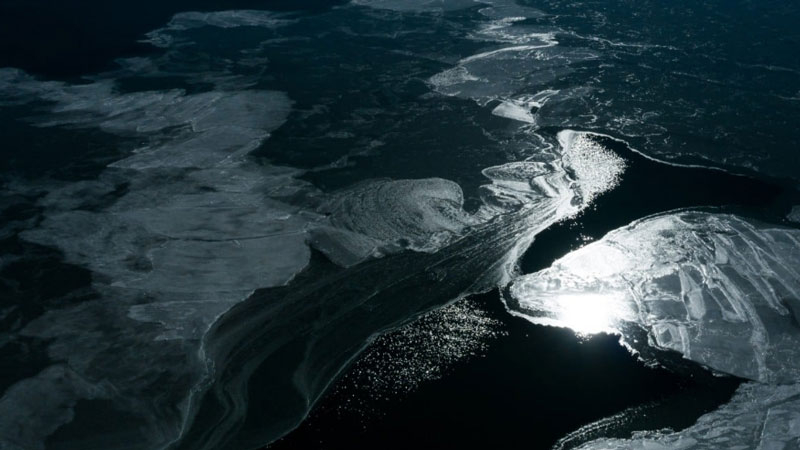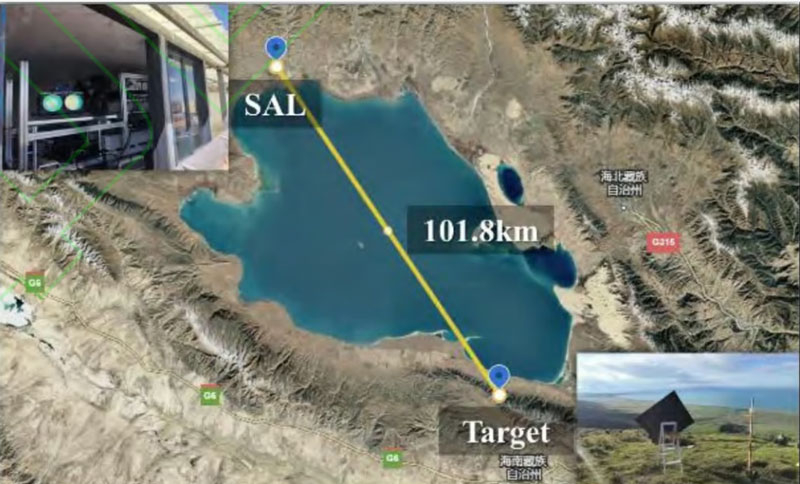Like in a spy movie: the Chinese have built a camera that can discern people’s faces on the ground from orbit


Chinese scientists reported in the specialized journal Lasers about the creation of the most advanced camera to date, which demonstrated a resolution of 1.7 mm from a distance of 100 km. In the future, the camera will be able to take such clear pictures from great distances that it will be possible to distinguish human faces from low orbit, as well as conduct reconnaissance of foreign satellites, including reading serial numbers on their onboard equipment.


View of Qinghai Lake. Image source: Xinhua
It is no coincidence that the article was published in the Lasers magazine. The presented camera is a modernized lidar. The laser illuminates a 4 × 4 matrix of microlenses, creating a synthetic aperture. It is practically a microwave radar, but it operates in the optical range. Due to the combination of several transmitters and receivers, as well as thanks to noise reduction and processing algorithms, it was possible to achieve an incredible result.


Experimental design
The system was developed by a team of researchers from the Aerospace Information Research Institute of the Chinese Academy of Sciences. During the work, the camera was tested on Qinghai Lake. It was placed on the northern shore of the lake, and an array of corner reflectors was installed at a distance of 101.8 km on the opposite shore. The tests were carried out in ideal weather conditions, with no wind. The camera was able to distinguish details with a step of 1.7 mm and determined the distance to objects with an accuracy of up to 15.6 mm. This is two orders of magnitude greater than the capabilities of modern commercial equipment in this area.
Additionally, the laser beam was chirped over a wide frequency range, exceeding the 10 GHz bandwidth, which played a decisive role in achieving high range resolution, allowing accurate distance measurements. The scientists also used adaptive algorithms that reduced the optical noise of the laser radiation by 10,000 times. This made it possible to capture extremely weak signals from the target and obtain detailed images of distant objects, which was previously impossible at such distances.
Equipment
The presented technology can potentially be used for espionage purposes. It allows for detailed study of foreign military satellites, right down to reading serial numbers on their onboard equipment. However, in practice, achieving the stated image accuracy will be difficult, since it is necessary to take into account atmospheric turbulence (solved using adaptive optics) and a number of other factors, including the complexity of the mechanical design of the entire system.
Recent Posts
TikTok to Shut Down Its Instagram Clone on May 8
Chinese short-video service TikTok is set to shut down its TikTok Notes section on May…
Meta Loses Head of Fundamental AI Research
Meta✴'s VP of AI research Joelle Pineau has announced her departure from the company. Her…
Meta to Release Smart Glasses with Display and Price Tag Over $1000 by End of Year
Meta✴ is preparing a more expensive version of smart glasses as part of a joint…
China Allows EHang Electric Jets to Transport People by Air, but Air Taxi Services Still Banned
On March 28, 2025, Guangdong EHang General Aviation and its two partner air transport operators…
- Mobile phones, smartphones, cellular communications, communicators, PDAs
- Technology and IT market. news
Poco F7 Ultra and Poco F7 Pro are smartphones with powerful chips, advanced camera systems and high reliability
Xiaomi recently launched the Poco F7 Ultra and Poco F7 Pro smartphones, which feature high-performance…
A World in a Box of Locusts and Single-Player Co-op: Details on Disco Elysium’s Cancelled Kuno and Kunu Spin-Off
An internal presentation of Project X7, a cancelled ZA/UM spin-off of Disco Elysium led by…